What’s in the ocean water off SLO County’s coast? Scientists are listening to find out
Off San Luis Obispo County’s coast lies an underwater ecosystem that scientists are trying to understand — by listening.
The acoustics research, led by the National Oceanic and Atmospheric Administration, aims to gather baseline information about the proposed Chumash Heritage National Marine Sanctuary before its potential establishment.
By placing sound recorders on the Pacific Ocean floor, scientists can hear the fish, whales and other animals that migrate through the relatively unstudied area, as well as boat noises and underwater explosions.
Those sounds can help scientists learn more about everything from fish breeding behavior to whale migration in the proposed marine sanctuary area, which stretches from Cambria down past Point Conception and covers about 7,670 square miles.
“We can listen all the time, night and day — and we can record entire breeding seasons without ever laying eyes on (the animals),” said Lindsey Peavey Reeves, the West Coast region sanctuary soundscape monitoring project coordinator for the National Marine Sanctuary Foundation. “We’re learning what the ecosystem and soundscape are now before there’s offshore wind and a national marine sanctuary.”
Designated national marine sanctuaries are required to submit condition reports so NOAA can assess how the ecosystems may change over time. So the work being done by Peavey Reeves and the other researchers in the proposed Chumash Heritage National Marine Sanctuary gives future researchers a head start on understanding the conditions in the area.

So far, a team of NOAA scientists has placed one recorder just off the coast of Harmony Headlands State Park, a few miles north of Cayucos, and another recorder roughly 50 miles offshore of Morro Bay near the planned site of a floating wind energy development. Both locations are within the boundaries of the proposed Chumash marine sanctuary.
In total, there are more than 30 sound recorders placed by NOAA scientists around the United States in areas such as the Channel Islands National Marine Sanctuary off the coast of Santa Barbara, the Monterey Bay National Marine Sanctuary, the Florida Keys and Papahānaumokuākea National Monument in Hawaii.
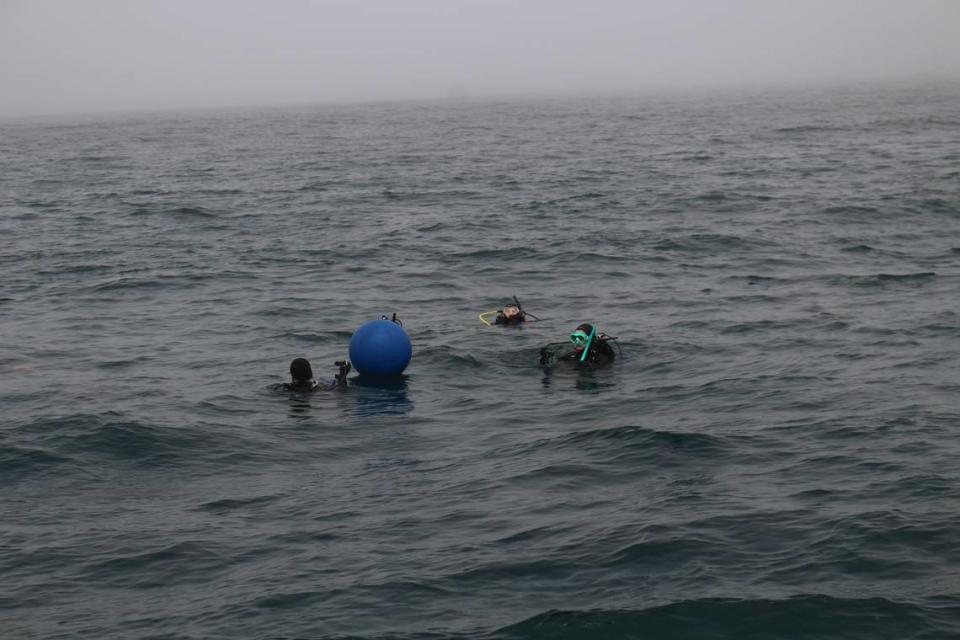
Sound recorder placed in kelp forest area off SLO County coast
NOAA first placed a sound recorder off the coast of Harmony Headlands State Park in June 2022.
Every four months, NOAA scientists have replaced it with a new one to analyze the seasonal data.
On a foggy day in mid-July, Peavey Reeves and an all-women team of NOAA scientists set off from the Morro Bay harbor to pick up the sound recorder that had been sitting at the bottom of the ocean since March.
After recovering the recorder from its spot about 20 meters below the surface, the scientists plan to analyze its data to listen for whales and fish singing in the area.
The same day, the scientists sent another, identical sound recorder down to the ocean floor in nearly the same spot.
That sound recorder, named CH-01, will sit at the bottom of the ocean for about four months before it is taken out for scientists to analyze the data it holds.
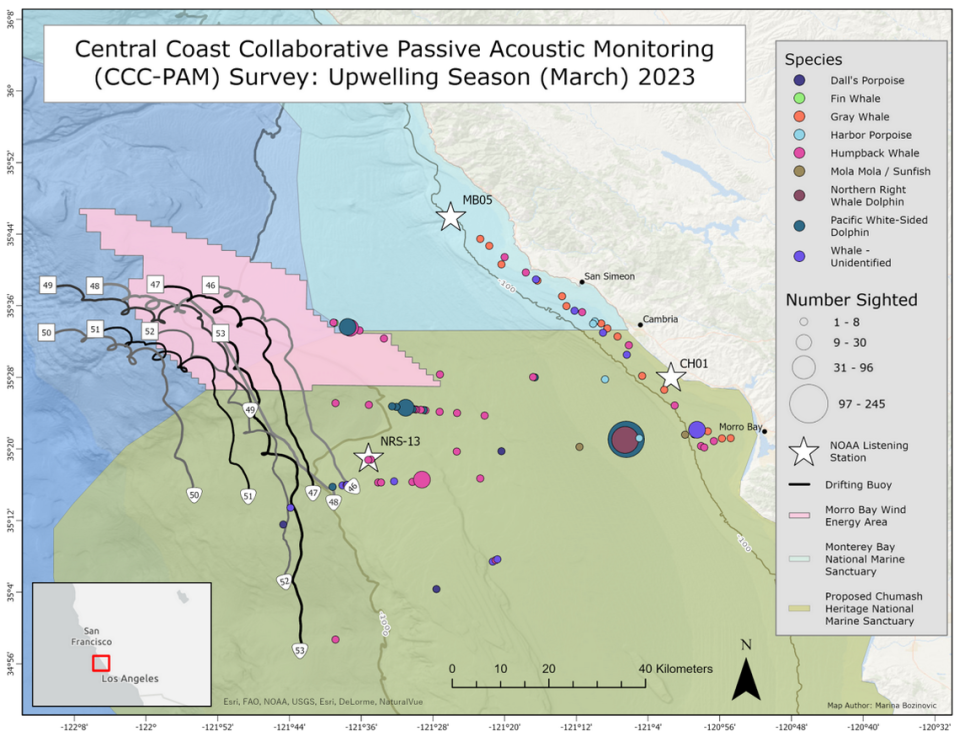
The CH-01 sound recorder was strategically placed in an area typically lush with kelp that provides a home for fish and marine mammals such as sea otters.
However, during the mid-July dive survey of CH-01 after it was dropped, the NOAA scientists discovered the kelp forest was gone — perhaps destroyed during the rough winter storms the area experienced. They were instead greeted by a wide-open rocky ocean habitat with colorful anemones, sea urchins and small fish.
“That was really awesome,” Kacey Cooper, California Sea Grant Fellow at the Channel Islands National Marine Sanctuary, exclaimed after she surfaced from diving to observe the sound recorder on the ocean floor.
The scientists expect the kelp forest to grow back over the summer and fall in calmer ocean conditions.
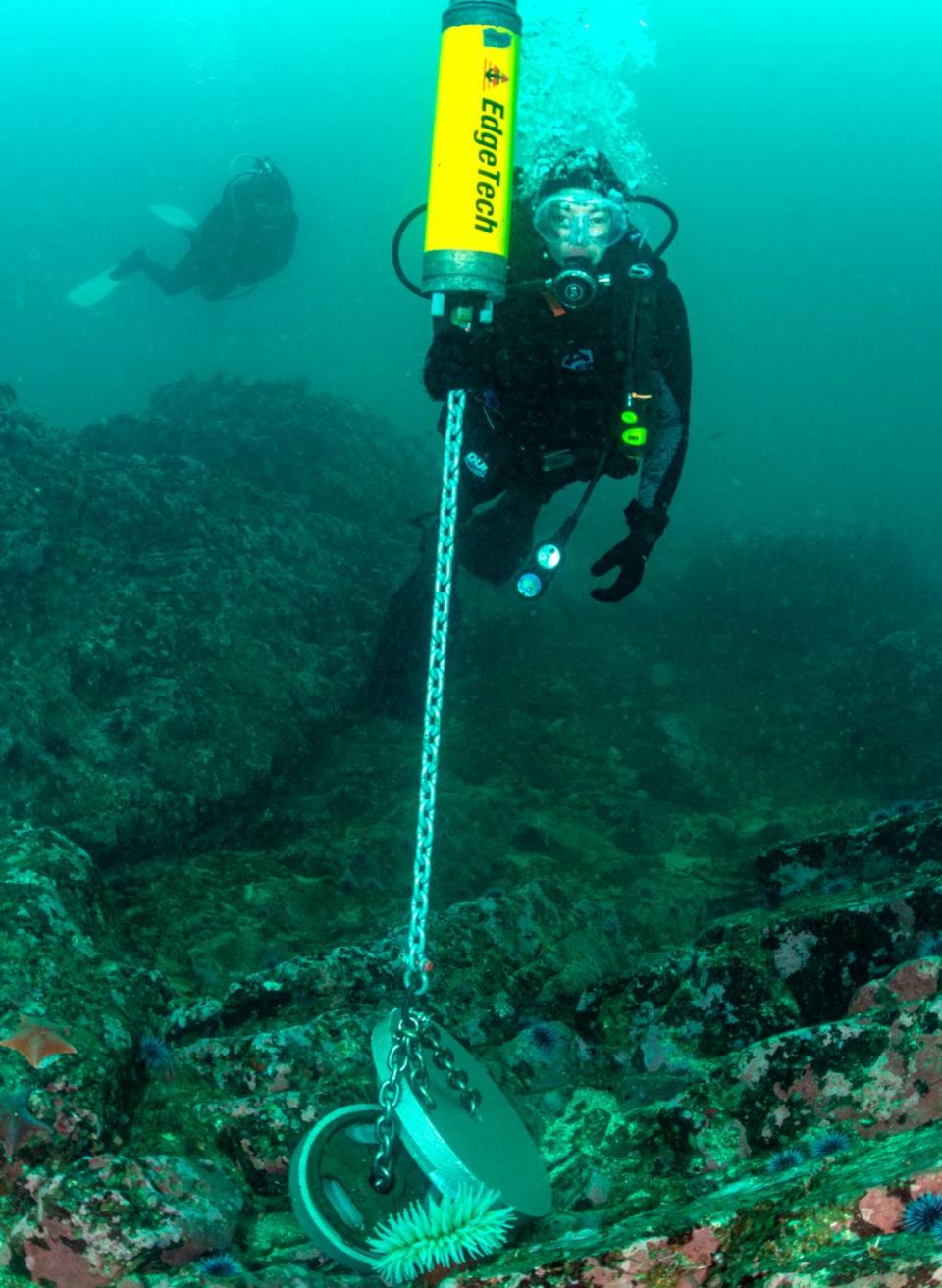
Researchers hear fish singing in proposed national marine sanctuary
So far, NOAA scientists have learned a lot from the data gathered by sound recorders.
The ocean is generally noisy, researchers said, with ships and animals making up much of the cacophony.
In the area near the CH-01 sound recorder, the NOAA scientists can hear fish particularly well.
Specifically, midshipman toadfish and bocaccio rockfish can be heard singing a “fish chorus,” said Ella Kim, a doctoral candidate at the Scripps Institute of Oceanography at UC San Diego.
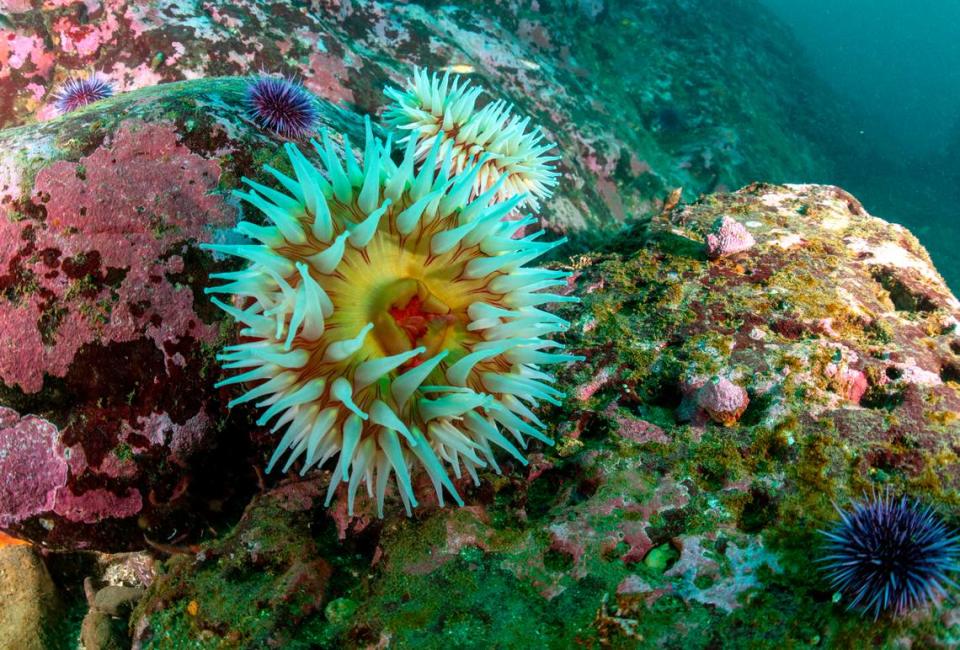
These are sounds usually made when the fish are breeding, Kim added.
Emma Beretta, a fourth-year statistics and biology student at Cal Poly in San Luis Obispo, is helping Kim analyze the data from the sound recorder at the CH-01 site for evidence of fish. She’s been able to identify the midshipman and bocaccio singing around the recorder.
Listening to the fish sing is a far less invasive method of studying them than the typical methods of capturing and sometimes tagging the animals, Kim said. And it’s allowed the researchers to take a peek into the seasonal and daily habits of the fish.
“We have been continuously finding that midshipman and bocaccio tend to call at night,” Beretta said.
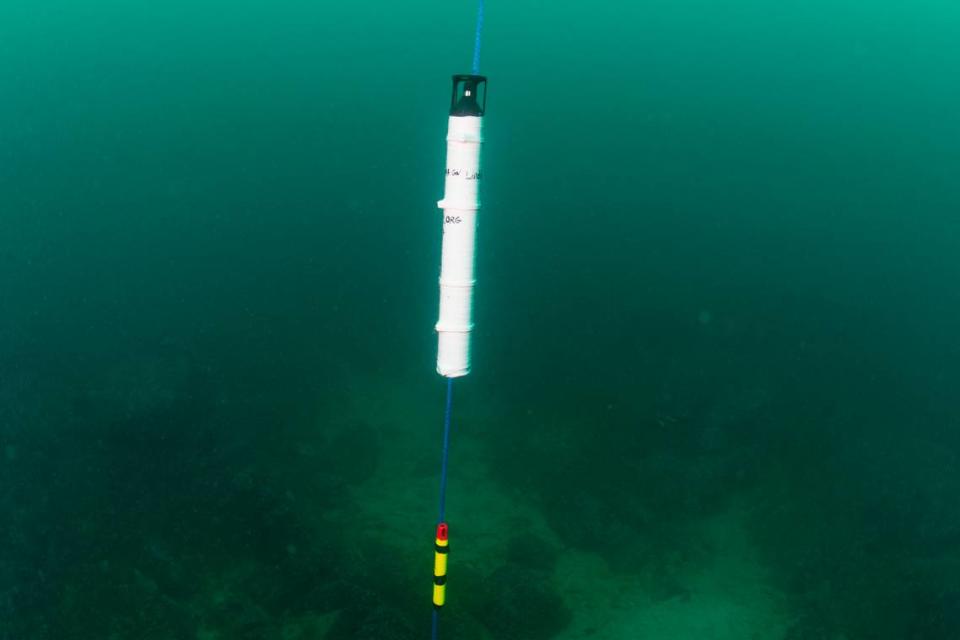
The CH-01 site doesn’t have as many fish species singing as other sound recorder sites the scientists maintain, researchers said.
“At Monterey Bay, we see not just those two fish, but we see three other unidentified fish,” Kim said. The Monterey Bay site Kim referred to is known as MB-01, located about a mile off the coast of Point Pinos at the southern end of the Monterey Bay.
The CH-01 site is also somewhat quiet when it comes to whale noises, according to the scientists.
At another site called MB-05, located about five miles off the coast of Ragged Point, blue whales and fin whales can be heard singing typically August through December, according to data from the Monterey Bay Aquarium Research Institute, which sponsors the sound recorder.
That means those whales were passing near the recorder and singing to each other — perhaps for feeding or communication.
Although the sound recorder hasn’t picked up as many whale songs during January through September, there could still be whales nearby during that time but they could be silent, according to Will Oestreich of the Monterey Bay Aquarium Research Institute.
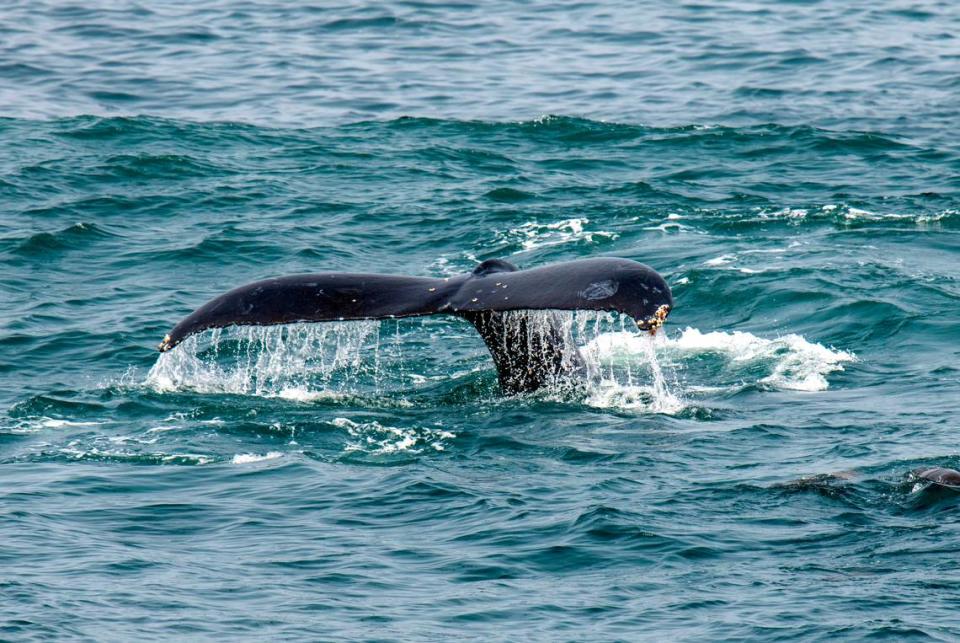
Scientists aim to grow network of underwater sound recorders
Kim and others working on the acoustic ocean research projects aim to build their network of underwater sound recorders to better understand which fish populate which areas of the ocean and when they are there, she said.
Peavey Reeves said the data is helping the scientists gain a much deeper understanding of what the underwater ecosystem in the proposed national marine sanctuary is like.
“We want to understand: What is the normal right now? What are the animals that are there? How frequently are vessels passing by? How loud are they? What species can we identify?” she said. “It’s really, really powerful, especially with climate change because once you have this baseline understanding of what the patterns typically are, then you can identify when that changes.”
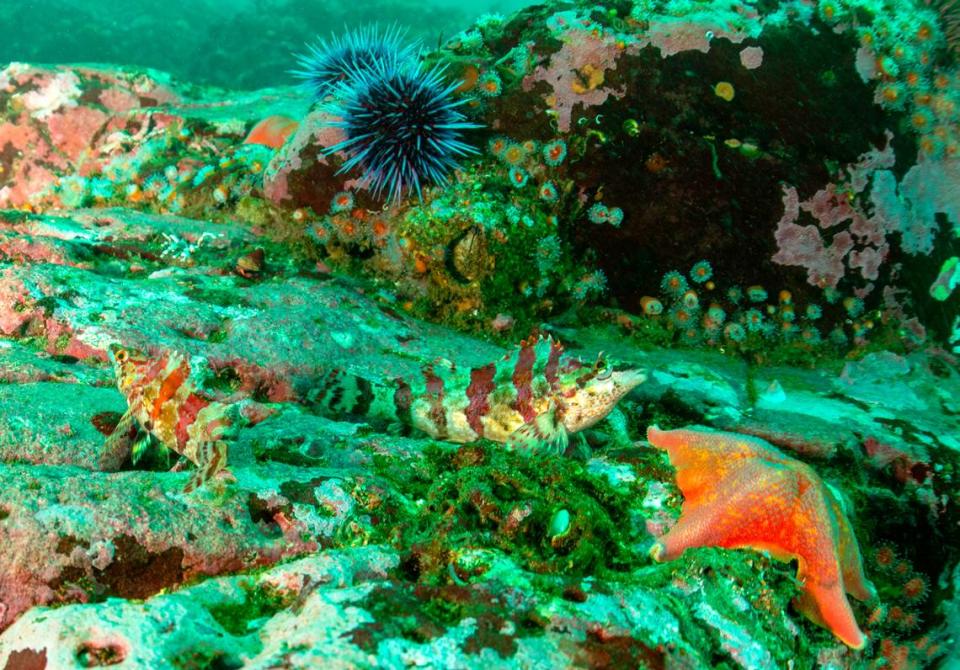
What’s next for Chumash Heritage National Marine Sanctuary proposal?
The Chumash Heritage National Marine Sanctuary was nominated by the Northern Chumash Tribal Council in 2015.
Since then, NOAA has been evaluating whether the proposed area is eligible for national marine sanctuary designation.
After several delays, NOAA officials say the agency is expected to release the draft designation documents within the next few months.
Those documents will include a publication of a notice of proposed rulemaking, a draft environmental impact statement and a draft management plan for the proposed Chumash Heritage National Marine Sanctuary.
Following the release of the draft designation documents, NOAA will open a public comment period to allow community members to voice their opinions about the proposed sanctuary’s draft designation documents.

